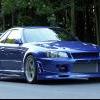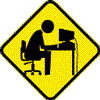After the blue screen, it reboots and usually throws up an error about PXE-E61: Media test failure, check cable. (I did remove and put the hard drive back in, didn't seem to make a difference). If I leave the computer off for a couple of hours or more, it will generally boot fine without a hitch. (Overheating, perhaps?)
It did manage to run Autochk once, which threw up a number of messages that I couldn't digest before they were gone and the system booted normally. While trying to find the system log which I thought would tell me what the messages were, the blue screen came up for the most recent time.
To throw a wrench in, a couple of days before the first occurence, McAfee picked up an occurence of the User Protection malware.
I understand there are numerous things which could cause some of these symptoms, so would like some guidance in getting to a good diagnosis.

 This topic is locked
This topic is locked















 Sign In
Sign In Create Account
Create Account

